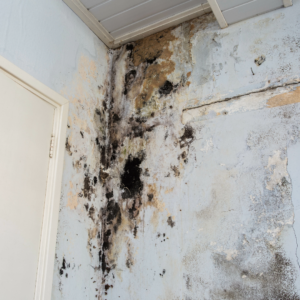A Comprehensive Guide to Mold Assessment
Are you worried about mold in your home or office? A mold assessment can provide you with vital information about the extent of the mold issue and the cause of the growth.
During a mold assessment, a certified inspector will inspect your property for mold growth, assess the building to identify why change is present, potentially take samples of suspected growth, and provide you with a detailed report of their findings.
But only some people know what they’re doing.
Consumers should know what to expect from the mold professional. A good assessor should be able to convey the assessment details, summarize site conditions and causes of moisture issues, and provide evidence to support their findings and recommendations. The assessor is responsible for ensuring that problems are addressed correctly and developing a clearance standard for consumer protection.
What should you expect from a mold assessment?
 The law requires a common standard between the contractor and the assessor to protect the consumer. While there are no established criteria for mold assessments, the framework includes identifying the cause of the growth and providing recommendations for correcting the core issue and area affected by mold.
The law requires a common standard between the contractor and the assessor to protect the consumer. While there are no established criteria for mold assessments, the framework includes identifying the cause of the growth and providing recommendations for correcting the core issue and area affected by mold.
The assessor should visually inspect all apparent matters and other possible related building science issues.
Good assessments will always include:
- identification of the cause
- quantity of growth
- a prescription for remediation
- clearance criteria
- a budget for the project
The assessor is required to give a scope of mitigation that provides for cost and clearance criteria.
The Mold Program enforces Article 32 of the New York State Labor Law, establishing licensing requirements and minimum work standards for mold assessment and remediation professionals.
There are three main components to the law:
- Training: The Mold Program will protect consumers by requiring contractors to obtain appropriate training before being licensed to perform mold assessment, remediation, or abatement services.
- Licensing: Contractors can only advertise or perform covered work with the required license, with limited exceptions, such as home or business owners performing work on their properties.
- Minimum Work Standards: The Mold Program also establishes new minimum work standards for licensed professionals’ mold assessments and remediation activities.
Consumers should consider a mold assessment for the following reasons:
- Protection against fraud by prohibiting the performance of both the assessment and remediation on the same property by the same individual
- Protection against fraud by requiring an independent, unbiased mold assessment to define the scope of the remediation work
- Identification of disinfectant products consistent with U.S. Environmental Protection Agency standards
- Provision of personal protection equipment to employees, as necessary
- Posted notice of the project and the contractor’s licenses
- Completion of a post-remediation assessment
A reliable and knowledgeable environmental consulting firm can provide you with a detailed report on mold.
The mold report should include four essential components:
1. Microbial Assessment
A mold assessor will gather as much information about the property and the likely cause when assessing microbial issues in a property.
The assessor should use various methods to assess the presence of mold or other microbial growth in a property. These include conducting an occupant interview to gather any history or complaints related to mold, trying to determine if there are any moisture issues, looking at recent renovations and how they have impacted the airflow and drainage around the property, observing any visible signs of mold or water damage, and utilizing methods such as moisture measurements and sometimes sampling to identify the type and extent of microbial growth present. These methods can help the assessor to gather information and determine the extent of the problem.
Once appropriate data is collected, the assessor will condense the information gathered into a summary of findings with recommendations that will drive the scope of work for both the cause of growth and the growth itself.
A good mold assessment report offers a scope of mitigation of the growth identity, which includes cost and clearance criteria.
2. Recommendations
A mold assessment report should include moisture management strategies, such as repairing leaks, improving ventilation, and recommendations for microbial mitigation. Depending on the extent of the problem, these recommendations may have associated costs in addition to the mold mitigation. For instance, if your basement shows water penetration on walls, the assessor determines it’s likely due to uncleaned gutters. The cost to remedy the moisture issue would be in addition to any remedial work required on the walls where water and mold were noted.
Identifying why the property has mold issues is paramount to a reasonable assessment; otherwise, the problem will likely continue.
3. Microbial Mitigation Work Scope
The assessor will comprehensively evaluate the situation or problem during a mold assessment. The report includes identifying potential risks or hazards, determining the extent of contamination, and assessing the environmental impact.
The primary goal of the assessment is to gather as much information as possible to make informed decisions about how to proceed with mitigation efforts. The assessor’s job is to help define the steps required in the removal/mitigation project. Depending on the size and severity, things like full containment and negative air may be required for the job. Providing this plan helps to level the playing field when securing bids from multiple contractors.
Always try to get at least three bids for the project for the most competitive pricing.
4. Industry Guidance
It is important to acknowledge that assessors are supposed to adhere to globally recognized standards and methodologies to carry out their responsibilities effectively. While no actual standard is required by Article 32, some are suggested, like the IICRC S520 Standard Guide for Professional Mold Remediation and AIHA Recognition, Evaluation, and Control of Indoor Mold.
Note: Insurance companies depend on these standards to determine mold-induced damage coverage. Ensuring your assessor uses industry-accepted guidance will help you get the best product with substantive recommendations.
Taking prompt and corrective actions can help avoid any further damages and potential negative costs.
Spotting Red Flags: How to Choose the Right Person for the Job
 When hiring a mold assessor, exercise caution and be aware of potential warning signs.
When hiring a mold assessor, exercise caution and be aware of potential warning signs.
One red flag to watch out for is assessors attempting to provide health advice or promote unnecessary testing, which can significantly impact your budget.
The assessor’s job is to identify potential negative situations but should not comment on their impact on your specific health. Every individual’s health is complex, and you should consider multiple facets of your situation. If you experience any adverse health effects, bring your assessment to your doctor and let them provide personalized recommendations for you and your family’s unique health needs.
Another red flag to watch out for is inspectors advising about mold without a grasp of mold standards and regulations. It’s good practice to ask what standards the assessor uses for reference.
Certified mold assessors can offer a more comprehensive property analysis with a strong understanding of the environmental factors affecting a home, such as mold, air quality, and water damage. Building science is a significant part of a good assessment. The assessor needs to understand the basic principles of building systems.
Keep in mind that the primary responsibility of a mold assessor is to analyze data collected during the assessment and to provide recommendations to correct them, not to provide medical guidance.
A third red flag is when assessors direct you to one specific contractor or a “buddy“ who can do the work. Article 32 requires clear separation between parties to avoid collusion. Most good assessors can provide lists of local contractors they’ve worked with and have seen good results, but they should never push you toward only one firm.
A final red flag is to beware of assessors who take samples and just forward results without explanation or recommendations. Taking samples is fine if that’s all you paid for. Still, a complaint assessment must include why the mold grew, if and how much mold there is, a scope for remediation, clearance criteria for inspection after the job, and a budget for potential costs.
By remaining informed and attentive during the hiring process, you should be able to find a dependable and honest expert to assist you in resolving any mold problems in your home or business.
No matter what, make sure you ask questions and get a clear understanding of what to expect from your mold assessment.

